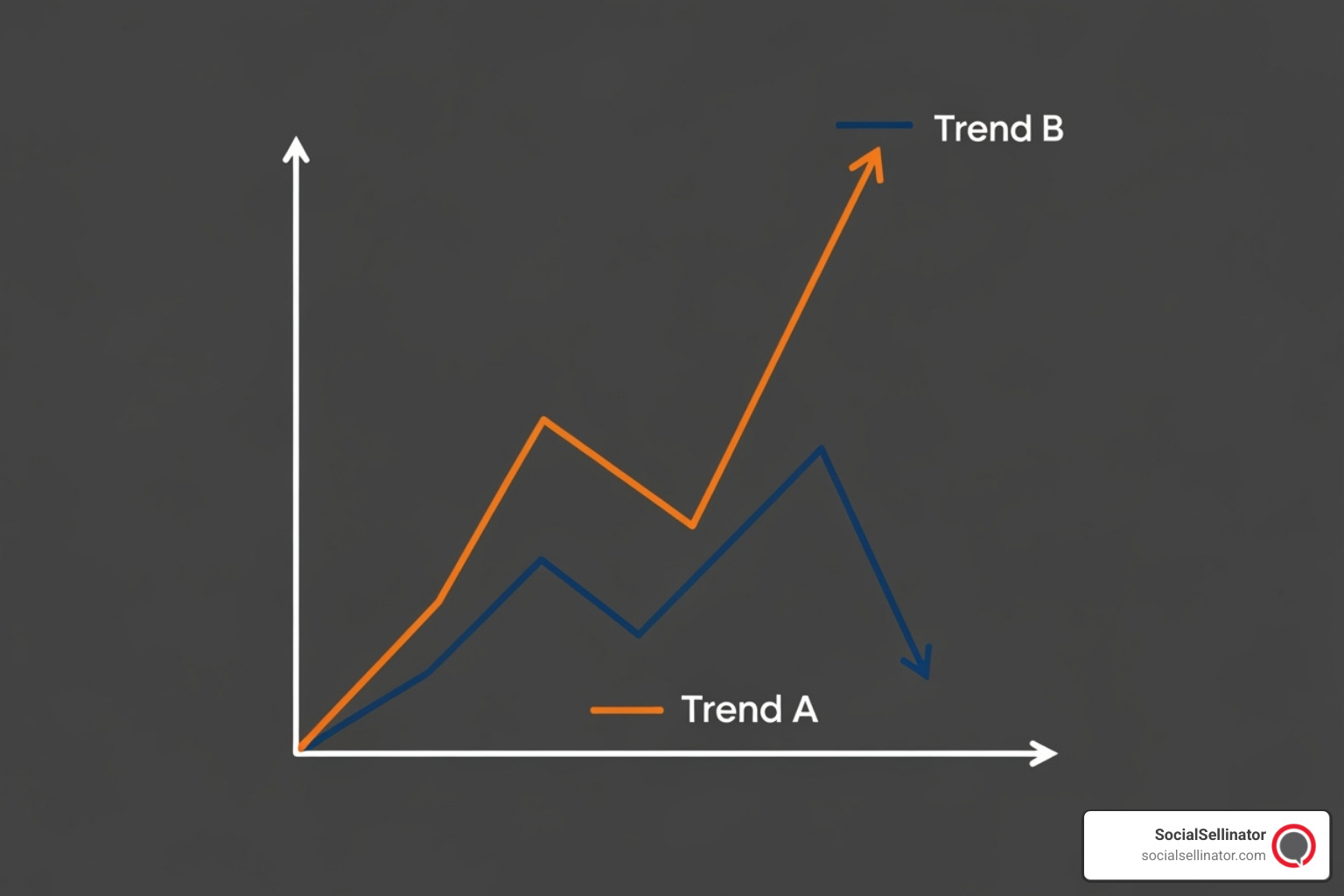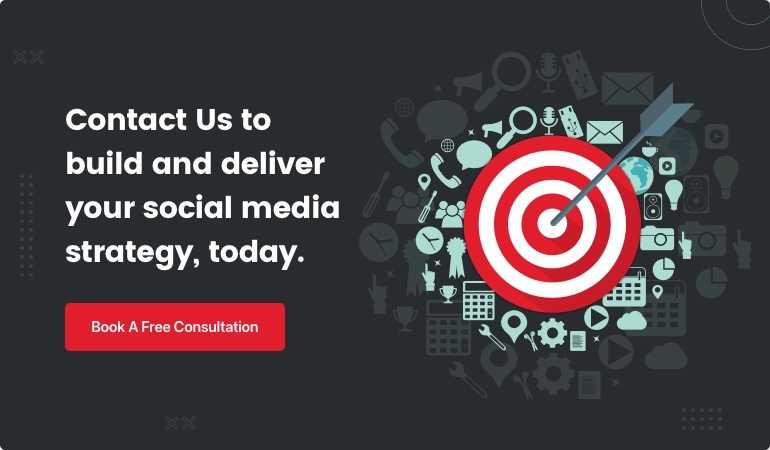What Are CRO Services and Why Do They Matter?
The Core Components of a Comprehensive CRO Strategy
Think of CRO as a scientific workout plan for your website. It's not about guesswork; it's a disciplined, repeatable process. A robust strategy follows a tight analyze → hypothesize → test → learn loop, ensuring every change is rooted in data and contributes to a larger goal.
1. CRO Audits: Find the Leaks
Before changing anything, a professional audit pinpoints where prospects fall out of the funnel. This foundational step combines quantitative data with qualitative analysis to build a complete picture:
- Heuristic walkthrough: An expert evaluation against established usability principles. Is the value proposition immediately clear? Is the navigation logical and predictable? Are calls-to-action (CTAs) prominent and compelling?
- Technical check: A deep dive into the site's backend performance. This uncovers silent conversion killers like slow page speed, mobile rendering issues, broken forms, and cross-browser compatibility bugs.
- Analytics deep-dive: Using tools like Google Analytics, we analyze user-flow reports, identify high-traffic pages with high bounce or exit rates, and use heatmaps and scroll maps to see exactly where users click and lose interest.
- Qualitative feedback: This is where we uncover the why behind the data. On-site surveys, user polls, and session recordings allow us to hear directly from users about their frustrations, questions, and hesitations.
Our Website Optimization Near Me service packages these angles into one actionable report.
2. A/B and Multivariate Testing: Prove What Works
Once we have data-backed hypotheses, we test them scientifically. This is the core of CRO and removes personal opinion from the decision-making process.
- A/B testing (or split testing) compares two versions of a page (the original "A" versus a variation "B") to see which one performs better against a specific goal. It's ideal for testing bold changes like a new headline or page layout.
- Multivariate testing changes multiple elements on a page simultaneously (e.g., a headline, an image, and a CTA button) to find the highest-performing combination. This method is more complex and best suited for high-traffic sites where large sample sizes can be gathered quickly.
Key rules for success include altering only one key variable at a time in A/B tests, running tests long enough to achieve 95% or higher statistical confidence, and pre-calculating the required sample size to avoid stopping a test prematurely. As the Harvard Business Review explains in its overview of statistical significance, rigorous math is essential for reliable results. For email campaigns, see our Definitive Guide to A/B Testing Your Email Marketing Campaigns.
3. Landing Page & Design Optimization
Great design isn't just about aesthetics; it's about balancing user psychology with seamless performance to guide users toward a conversion.
- Mobile-first layouts: With over half of all web traffic coming from mobile devices, a responsive design is non-negotiable. Mobile page speed and usability directly impact conversions and search rankings.
- Trust signals: People buy from businesses they trust. Prominently displaying testimonials, customer logos, security badges (like SSL), and clear contact information can significantly reduce anxiety.
- Persuasive copy: Your words matter. Focus on the benefits your customer will receive, not just the features of your product. Ensure your core value proposition is clear and visible "above the fold."
- Visual hierarchy: Use color, size, contrast, and whitespace strategically to create a clear path for the user's eye, leading them directly to your primary CTA.
Need stronger content? Review our 10 Tips to Create Blog Posts That Convert.
4. Funnel Analysis & Optimization
We map the entire customer journey—from initial awareness through consideration to the final conversion—to identify and fix drop-off points. Common friction areas include:
- Confusing site navigation or product categorization
- Unexpected pricing or shipping costs revealed late in the process
- Long, complicated, or intimidating checkout forms
The average cart-abandonment rate is a staggering ~70% according to the Baymard Institute's research. Simple fixes like slimming down form fields, offering a guest checkout option, and reinforcing trust badges at the payment stage can recover a significant chunk of that otherwise lost revenue.
Dig deeper into journey stages with our guides on Awareness Consideration Conversion and Social Media Marketing Funnel Stages.
The Tangible Business Benefits of Investing in Professional CRO Services

The impact of a strategic CRO program extends far beyond a single metric, creating a positive ripple effect across your entire business.
- Instant profit boost: The math is simple and powerful. Doubling a 2% conversion rate to 4% effectively doubles your revenue from the same amount of traffic and ad spend.
- Lower Customer Acquisition Cost (CAC): As a higher percentage of your visitors convert, the cost to acquire each new customer drops automatically. This makes your marketing budget more efficient and scalable.
- Sustainable competitive moat: In a crowded market, the companies that learn faster, win. Companies that test consistently and systematically build a deep understanding of their customers that competitors can't easily replicate.
- Fosters a data-driven culture: The discipline of experimentation often spreads from the marketing team to other departments like product development and customer success, leading to smarter decisions across the board.
A DNA testing center we optimized saw homepage conversions rise 21 % and button clicks soar 186 %. Similar results scale across industries, from SaaS to retail.
Maximizing Your Marketing ROI
CRO acts as a multiplier for all your other marketing efforts, ensuring you get the most value from every channel.
- PPC: Better-converting landing pages lead to a higher Google Ads Quality Score. This, in turn, lowers your cost-per-click (CPC) and improves ad positioning, stretching your budget further.
- SEO: Key elements of CRO, such as improving page speed, reducing bounce rates, and increasing user time on site, are all positive usability signals that search engines like Google reward with higher rankings.
- Content Marketing: By testing headlines, CTAs, and content formats, CRO ensures your valuable blog posts and guides are not just attracting traffic but are actively converting readers into leads.
- Email Marketing: Optimizing email subject lines, layouts, and landing pages can dramatically increase open rates, click-through rates, and the ultimate conversion rate of your campaigns.
- Customer Lifetime Value (LTV): A smooth, trustworthy, and positive first purchase experience is critical for encouraging repeat business and word-of-mouth referrals, which are essential for long-term growth.
Learn more in our resources on Digital Marketing ROI Calculation and Pay Per Click Optimization.
Customer Insights You Can Use Everywhere
Tests uncover deep truths about your audience: their core motivations (e.g., desire for security, value for price, need for social proof) and their primary objections (e.g., confusion about returns, frustration with hidden fees). These findings are not just for the website; they can be used to refine buyer personas, sharpen ad copy, and even inform your product roadmap. See our Buyer Persona Example to turn raw data into actionable profiles.
UX & Trust Go Hand-in-Hand
- Page speed: A non-negotiable for user experience. Every extra second of load time can cause your bounce rate to spike by 32%, according to Google.
- Frictionless flows: Simplifying processes is a huge win. Studies have shown that reducing the number of form fields can increase conversions by up to 120%.
- Consistent credibility: Trust is built through a combination of professional design and clear signals like security badges, authentic testimonials, and transparent policies. These elements reassure hesitant shoppers at critical moments.
How to Choose the Right CRO Agency for Your Business

A great CRO partner feels like an extension of your own team. Use the checklist below to separate pros from pretenders.
Key Questions to Ask
- What is your optimization process?
- Which tools do you use for testing and analysis?
- How do you document learnings from both winning and losing tests?
- How will you report results and communicate next steps?
- Can you share relevant case studies?
- What is your pricing model and who will work on my account?
Agency Models at a Glance
- Full-service digital agencies – CRO integrated with SEO, PPC, and content.
- Specialized CRO consultancies – deep testing expertise, lighter on other channels.
- Engagement types – project-based (short, defined scope), retainer (ongoing), or performance-based (risk/reward shared).
Pick the mix that matches your goals, internal resources, and appetite for speed.
Red Flags
- Guaranteed results
- One-size-fits-all templates
- No clear testing process
- Poor or infrequent communication
- Reports focused on vanity metrics over revenue
Our guide on Optimizing Result Digital Agency Strategy for Search Engine Marketing offers more tips for vetting partners.
Frequently Asked Questions about Conversion Rate Optimization Services
How long until we see results?
Timeline hinges on your website's traffic volume. A site with 10,000+ monthly visitors might achieve statistical significance on a key page test in just two to four weeks. In contrast, lower-traffic B2B sites may need a couple of months to gather enough data for a conclusive result. Generally, you can expect to see meaningful first wins within the first 60-90 days, with gains compounding significantly after 6–12 months of consistent optimization.
What’s a “good” conversion rate?
While industry benchmarks can be a helpful reference, they vary widely by industry, traffic source, and business model:
- E-commerce: 1–3 %
- Lead gen: 2–5 %
- Top performers: 11 %+
The most important goal is not to chase a generic average but to achieve continuous upward momentum from your own baseline. Improving your rate from 1% to 1.5% is a massive 50% lift. Use our Close Rate Calculator to model the financial impact of such improvements.
What tools are used for CRO?
A professional CRO toolkit includes a variety of platforms for different tasks. For analytics, Google Analytics is foundational. For user behavior analysis, tools like Hotjar or Crazy Egg provide heatmaps, scroll maps, and session recordings. For A/B and multivariate testing, platforms like Google Optimize, VWO, or Optimizely are industry standards. Finally, for gathering qualitative feedback, survey tools like SurveyMonkey or Hotjar's built-in polls are essential.
Is CRO a one-time project?
Absolutely not. Viewing CRO as a one-time project is a common mistake. The digital landscape is constantly evolving: markets shift, user expectations rise, new competitors emerge, and technology changes. Continuous testing is the only way to stay ahead of the curve and prevent the gains you've made from eroding over time. Think of CRO as “website fitness”—if you stop training, your performance will inevitably slide.
Conclusion: Start Your Journey to Higher Conversions
Every unconverted visitor is a lost opportunity and a hidden cost. Professional CRO services turn that leak into lift, compounding small wins into major revenue growth. Whether it’s fixing a sluggish checkout, clarifying your value proposition, or finding the message that makes buyers say yes, SocialSellinator can help.
Ready to open up more growth from the traffic you already earn? Explore our Lead Generation Services or boost paid traffic with expert Google Ads management. Let’s turn clicks into customers.
Headquartered in San Jose, in the heart of Silicon Valley and the San Francisco Bay Area, SocialSellinator proudly provides top-tier digital marketing, SEO, PPC, social media management, and content creation services to B2B and B2C SMB companies. While serving businesses across the U.S., SocialSellinator specializes in supporting clients in key cities, including Austin, Boston, Charlotte, Chicago, Dallas, Denver, Kansas City, Los Angeles, New York, Portland, San Diego, San Francisco, and Washington, D.C.





